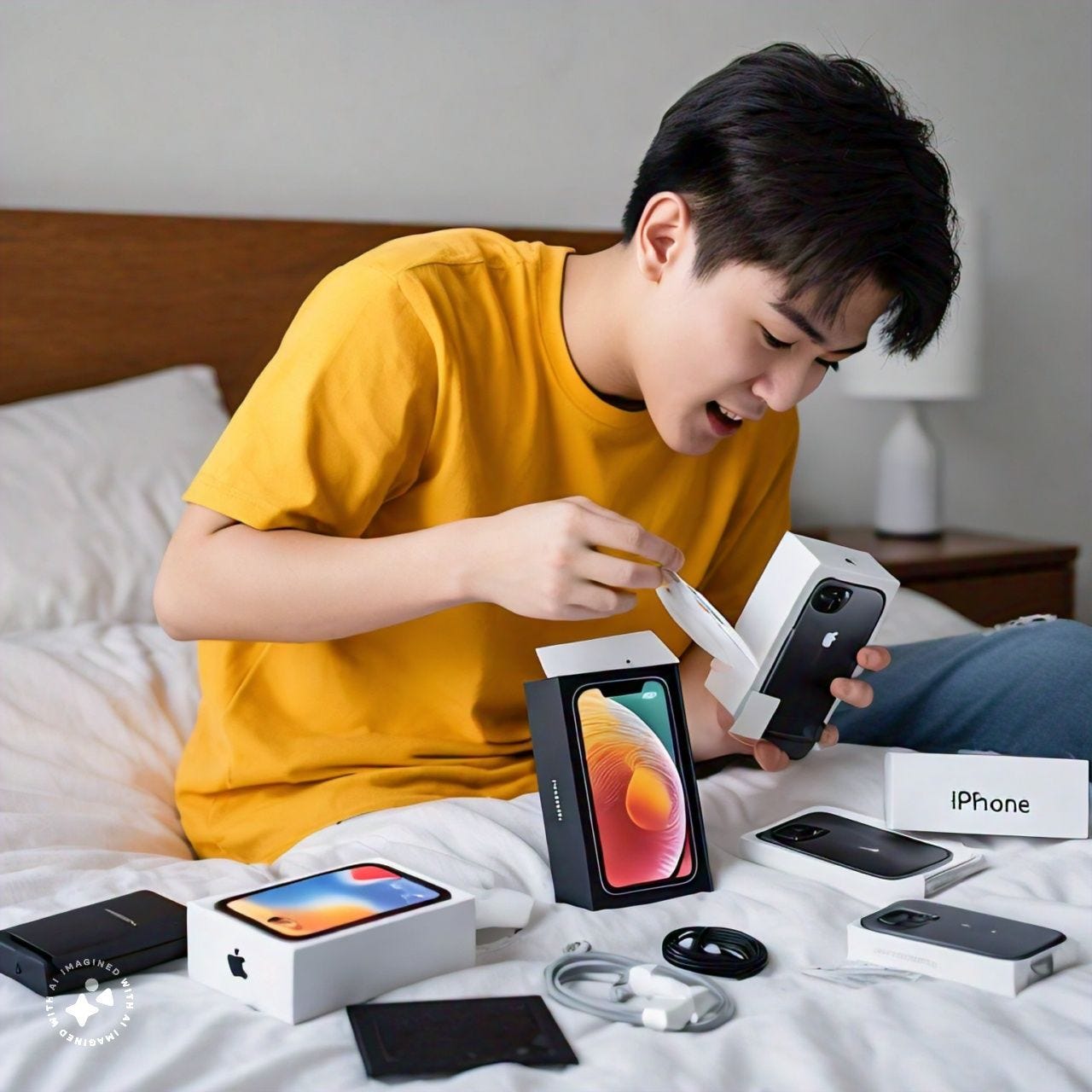From Zero to 261 Million: Uncover MrBeast's Viral Strategies
3 psychological biases used by the second most followed Youtuber you won't be able to unsee anymore. 3 more for our paid readers.
Jimmy Donaldson was a regular 14-year-old boy in 2012. Today, he runs the second most popular YouTube channel on the planet. While many people said he was lucky to have started early, Phill Agnew from The Nudge podcast figured that Jimmy made smart moves early on.
By studying his earliest videos, you can uncover the psychological biases Jimmy Donaldson skillfully employed to capture and retain attention. These tactics significantly influenced his popularity and accumulated millions of views. Here are a few of his videos you may be interested in:
How Many Rubber Bands Does It Take To Snap A Safe?, 37 Mn views
Reading The Longest English Word (190,000 Characters), 35 Mn views
You can spend enormous time dissecting his work and understanding the underlying strategies and tactics, but luckily, you don’t have to. In this edition of HustleHeads, I will write about the most popular psychological biases MrBeast uses, what we can learn from them, and how to use them in your business development or content creation.
Before we begin, if you’re not part of the HustleHeads fam 💪, please consider subscribing to my newsletter to join the 800+ vibrant and thriving community of hustles and productivity connoisseurs.
🔑 Key Takeaways
3 Game-changing psychological biases you can copy.
Bonus: 3 more psychological biases for paid readers.
3 Books that will inspire you to go the extra mile.
📚 Must-Reads on Going the Extra Mile
#1 💰 Cost Signalling

“The meaning and significance we attach to something is felt in direct proportion to the expense with which it is communicated.” — Rory Sutherland
Costly signaling theory suggests that the more money or resources a person invests in advertising their products or services, the greater the trust others are likely to have in their brand. By showcasing your investment in your content or your business, you’re signalling high quality and creating a sense of urgency for your potential audience. This strategy makes the viewers tend to develop a fear of missing out on what you’ve created.
MrBeast’s videos are a textbook example of cost signalling. He uses extravagant giveaways, massive charity campaigns, or meticulously crafted challenges that involve a huge financial investment.
Here he’s showing how he’s:
These videos aren’t just acts of creativity or generosity; they’re signals to his audience about the lengths he’s willing to go to create unique and high quality content. Like when he released a video that compare a $1 plane ticket to one that costs $500,000. Or when he recreates entire sets of popular series or games for his challenges.
He’s going the extra mile through massive financial investments. It demonstrates commitment, quality or investment in his content, brand or business.
Not Just MrBeast…
Marques Brownlee, a tech youtuber, spent $40,000 to unbox a sealed original iPhone. MrWhoseTheBoss, another tech youtuber, bought the most exclusive phones in the world. LivingBobby, a travel youtuber, spent 24 hours in world’s best first class ticket worth $68000. Nick DiGiovanni carved a whole bluefin tuna worth $50,000 on his channel.
So how do we use this bias in our content or business?
Cost signalling shows our community or audience how deeply we’re invested in our content or work — whether through time, effort, money or other resources. For instance, you can:
Show your investment by sharing behind-the-scenes footage of your work.
Show the making process of your product or content.
Be transaparent and show the research process and challenges you had to overcome.
Use high quality marketing materials like visuals, videos or sounds.
Use high quality packaging for your products.
Quality is always a sign of investment.
#2 🪧 Signs of Effort = Worthiness
“We value the things more when we know they cost a lot of time, energy, or money.” — Input Bias
When you pay a lot of money for a product or service, you value it more. What costs nothing is worth nothing.
When you know something takes a long time to prepare, you pay more attention to it and find it more valuable. For instance:
When you spend hours making Biryani, you’re emotionally attached to it and hope others value it as much as you do.
When you spend months on your short film, you hope others will like it.
When you pour your heart and soul into creating your newsletter, you’ll hope others will see how much time and effort you’ve put into it.
MrBeast used Input Bias in his early days on Youtube by recording himself doing insanely boring things that took hours or days.
He spent two hours reading the longest English word, 17 hours saying Logan Paul 100,000 times, and 24 hours counting to 100,000. You may ask who would watch that?! Well, apparently millions. People pay attention when you spend lots of time or effort on something.
So how do we use this bias in our content or business?
You can use titles like ‘He watched 50 Hours of MrBeast So You Don’t Have To’, which signals the users that you’ve already researched for so much time, hence this video is going to valuable.
Agnew, in his Nudge podcast, mentions running a Reddit ad for his podcast. He sar a 45% higher click-through rate on the ad when he mentioned he changed ‘Learn 6 memorable marketing lessons with Nudge, the podcast that simplifies the science behind great marketing’ to ‘I’ve spent 480 minutes listening to marketing experts over the past year on my podcast. Here are the 6 best marketing lessons I’ve heard’.
If you’re a blogger, you can use titles that imply you might know a thing or two about some skill. For example, titles like ‘I’ve been writing on medium for 5 years. Here’s everything I learned’.
Long story short, the Input Bias works because we value effort.
Going back to MrBeast, he never disappointed his audience. The more he grew, the crazier his challenges and videos became — still capitalising the Input Bias to his advantage.
#3 😼 Tease But Don’t Reveal

Now let’s talk about a strategy marketers and content creators can copy most easily — Exploiting the curiosity gap.
Content creators and marketers use the curiosity gap to capture and retain attention of viewers. The gap refers to what you currently know vs. what you want to know.
Let’s take on of MrBeast’s popular videos like $1 vs $1,000,000 Hotel Room. The title gives you an idea, a hint about what the video is, and your mind desperately wants to fill the gap.
Your curiosity is piqued. You want the gap to be answered. You not only click the video thumbnail, but stick around until you’re satisfied. These are some of the questions you want to find answers to:
How do you find a hotel room for a dollar a night? What does it look like? Did he really sleep there?
What does a hotel room that costs a million dollars a night look like? Is it possibly worth spending so much money on a single night?
He gets his viewers curious by giving them a sneak peek of what’s coming, but they can’t figure out the whole message without clicking on the content — and ideally watching it. There you go, the curiosity gap in action.
Moreover, MrBeast often structures his videos to maintain this curiosity until the very last second. He uses hooks, cliff hangers, upcoming challenges, rewards early in the video to ensure viewers stick around until the last second.
So how do we use this bias in our content or business?
The curiosity gap starts with your headlines. Each piece of content you produce should spark curiosity so your audience thinks, I have to learn more. Questions, thought provoking statements, subtle hints compel audience to seek answers by engaging with your content. MrBeast uses several brilliant strategies to keep viewer attention:
His videos start by telling the viewer that they’ll get way more than they clicked for.
He gets straight to the point without boring viewers with lengthy intros.
He makes bold promises that will keep you sticking around until the very last second.
An example of leveraging curiosity gaps in the newsletter and blogging niche is the use of “coming soon” posts on social media with a preview of the upcoming content or blurred images of a new product — all designed to build anticipation.
Teasers makes your audience feel like they’re in on a secret or a part of an exclusive group. This creates interest and enhances the perceived value of what you’re offering.
🌯 Wrapping up
The bad news about all of MrBeast’s biases is that you can’t fake them, it’s hard work.
Cost signaling won’t work if you don’t put in investments that signal quality and relevance. Input Bias requires you to put in hard extra work into your content. Curiosity Gap won’t work if there’s nothing to be curious about.
So much content today is shallow, repetitive and boring. The only way to make your content stand out is to go the extra mile.
If you think my content will be beneficial for your friends or family, please consider referring my newsletter to them. You can earn on referrals too!
You can also share my publication with them or on social media.
Let me know your thoughts on these psychological biases in the comments section. How do you use them in your content or business?
Thank you for reading.
P.S. We are not done yet. Here are 3 more psychological biases like Nostalgia, Numerical Precision, and FOMO, used by MrBeast exclusively for our paid readers. Check out the post below 👇






